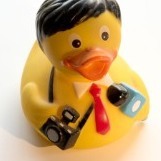Leica M11-P: New Flagship With Content Authentication
-
Recently Browsing 0 members
- No registered users viewing this page.
-
Similar Content
-
- 15 replies
- 1,469 views
-
- 1 reply
- 349 views
-
- 39 replies
- 2,547 views
-
- 4,957 replies
- 518,824 views
-
- 7 replies
- 1,012 views
-




Recommended Posts
Join the conversation
You can post now and register later. If you have an account, sign in now to post with your account.
Note: Your post will require moderator approval before it will be visible.